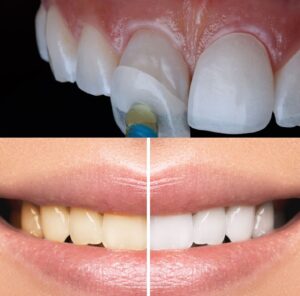
Understanding Bruxism: Causes, Symptoms, and Treatment Options
Introduction Bruxism, more commonly known as teeth grinding, is a condition that affects many people, often without them even knowing it. Whether it happens during
Mon, Tue, Thu, Fri: 7:30AM – 3:30PM Wednesday: 9:00AM – 5:00PM
Call Us: +1 (403) 273-6959
Mon, Tue, Thu, Fri: 7:30AM – 3:30PM Wednesday: 9:00AM – 5:00PM
Call Us: +1 (403) 273-6959

Periodontal disease begins when plaque; a sticky, colorless, film of bacteria, food debris, and saliva; is left on the teeth and gums. The bacteria produce toxins (acids) that inflame the gums and slowly destroy the bone. Brushing and flossing regularly and properly will ensure that plaque is not left behind to do its damage.
Other than poor oral hygiene, there are several other factors that may increase the risk of developing periodontal disease:
Tobacco users are more likely than nonusers to form plaque and tartar on their teeth.
Bridges that no longer fit properly, crowded teeth, or defective fillings that may trap plaque and bacteria.
Steroids, cancer therapy drugs, blood pressure meds, oral contraceptives. Some medications have side effects that reduce saliva, making the mouth dry and plaque easier to adhere to the teeth and gums.
Can cause changes in hormone levels, causing gum tissue to become more sensitive to bacteria toxins.
Diabetes, blood cell disorders, HIV / AIDS, etc.
Some patients may be predisposed to a more aggressive type of periodontitis. Patients with a family history of tooth loss should pay particular attention to their gums.
Brushing and flossing help control the plaque and bacteria that cause dental disease.
Plaque is a film of food debris, bacteria, and saliva that sticks to the teeth and gums. The bacteria in plaque convert certain food particles into acids that cause tooth decay. Also, if plaque is not removed, it turns into calculus (tartar). If plaque and calculus are not removed, they begin to destroy the gums and bone, causing periodontal (gum) disease.
Plaque formation and growth are continuous and can only be controlled by regular brushing, flossing, and the use of other dental aids.
Gums should never be red or swollen.
Gums should never bleed, even when you brush vigorously or use dental floss.
Caused by bacteria in the mouth.
Caused by bone loss.
Also caused by bone loss or weakened periodontal fibers (fibers that support the tooth to the bone).
Sign that there is an infection present.
Loss of gum around a tooth.
Plaque, calculus, and bacteria irritate the gums and teeth.
Good oral hygiene, a balanced diet, and regular dental visits can help reduce your risk of developing periodontal disease.
Unsure if your symptoms point to gingivitis or periodontitis? Early diagnosis and treatment are key. Schedule a consultation with a periodontist in NE Calgary for a personalized assessment.

Introduction Bruxism, more commonly known as teeth grinding, is a condition that affects many people, often without them even knowing it. Whether it happens during

When you’re missing teeth, it’s not just about looks – it affects how you eat and speak, especially if you’re missing several or all teeth.

When you’re missing teeth, it’s not just about looks – it affects how you eat and speak, especially if you’re missing several or all teeth.